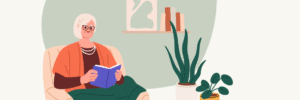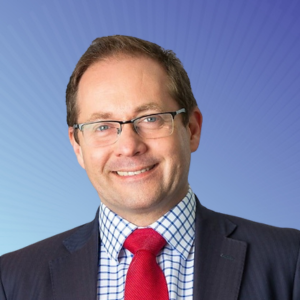Martha Rogers, PhD, one of the world’s leading experts on customer-focused business strategies, once invested $1000 with a friend who had become a financial planner. Her friend promptly lost $700 of it in bad investments. Rogers says after the loss, she still loved her friend and trusted her integrity, but she didn’t trust her competence. “I would no longer trust her with my money,” she says.
The experience highlights the vital role of trust in finance. “It’s huge,” Roger says. “It’s your money. This matters! In many cases it’s your future.”
But, more importantly, it highlights the complicated nature of trust, which incorporates both goodwill towards customers but also competence.
“We have to be able to trust that someone is looking out for “me” and not just their own commissions,” she says. “And they have to be good at what they’re doing. So if it’s an investment, I have to know they’re not going to lose money.”
Rogers spoke with Superfunds ahead of her two presentations at the ASFA Conference in Adelaide, where she will look at how important it is for organisations to earn and build ‘trustability’ – the level to which customers, employees and business peers can trust that you care about them and can deliver on promises and that you are proactive in their interests.
Rogers argues that for organisations—particularly financial service firms like super funds—gaining trust has never been more vital. In an age when technology is driving greater competitiveness and transparency, it may be one of the most potent sources of competitive advantage and disadvantage.
But gaining and building trust is difficult. It requires an understanding that trust matters. It requires a commitment—at all levels including the business model—to proactively focus on the things that truly deliver for customers and members, and not just the organisation itself. And then to effectively measure, reward, and improve trustabililty.
Rogers started her career as an advertising copywriter, ending up an advertising director of a large department store. But she had never studied advertising, so she went back to school to get a degree, ending up with a PhD from the University of Tennessee and becoming an academic where she taught advertising and marketing.
In the late 80s she realised the huge impact that technology would have on mass marketing and advertising. But when she told colleagues and students, who were focused on landing sexy Madison Avenue gigs, they weren’t interested.
One day she took some of her students to an Ad Club gathering where Don Peppers was presenting. “He was talking about exactly what was happening,” she says. She approached Peppers and told him a book needed to be written. He said he was a Madison Avenue guy and not an author. “Let’s write it together,” Rogers said.
Rogers and Peppers went on to co-author nine books, including their first, The One to One Future, a seminal book on customer-centric marketing, which has been described as “one of the two or three most important business books ever written”. (The duo also launched a consulting firm, Peppers and Rogers Group, now owned by TTEC.)
Their last book, Extreme Trust: Honesty as a Competitive Advantage, now in a updated and revised paperback, outlines how, in an age of transparency, companies must build trust to remain competitive.
Rogers says there are two qualities to trustability: competency and goodwill. That means someone will trust you when:
- they see that you have goodwill towards them and wish them well, and
- you are good at doing the things you say you’re going to do
When it comes to business, Rogers says there is a third element: being proactive. That’s when companies not only do the right thing but do it proactively.
So Rogers says therefore organisations need to do three things to build trust:
- Do things right
- Do the right thing
- Do it proactively
Unfortunately, becoming trusted is difficult. People generally are less likely to trust. In Australia, the Royal Commission into Misconduct in the Banking, Superannuation and Financial Services Industry has significantly damaged trust across the financial services industry.
Rogers says the Royal Commission, by its very existence, is sending a message from Government: You can’t trust finance companies, so we’re going to step in and make sure you’re safe. In that environment, an organisation or fund within the industry might be trustable, but the public will assume they can’t tell and will think, “If the Government says I’ve got to be wary, then I should assume they’re all out to get me.”
At the same time that trust is waning, organisations are now open to greater scrutiny. “One of the biggest things technology is driving is transparency,” Rogers says. “The cost of secrecy is rising. Social media exposes everything fast, and permanently. One slip-up, and somebody will likely release the video with a YouTube rant that goes viral.”
It is becoming increasingly difficult to hide. “All of a sudden you have to make decisions as though everybody is going to find out what’s happening, because—guess what—everybody will.”
Rogers says she thinks of the future as a place where there are “no more closed-door meetings”. “Even if you have a door on the meeting room it’s probably made of glass and people can read lips through it. There’s just not going to be the kind of secrecy there used to be.”
There is a path for organisations, and super funds, to build trust, but it’s not easy.
It means increasingly aligning members’ interests with the organisations’. Rogers says that is challenging. “That’s tough for a lot of companies,” she says. “But if they don’t, it comes out in the wash sooner or later.”
It’s tough because, firstly, alignment often means a focus on existing customers. But keeping customers, while cost effective, isn’t as sexy as reporting customer acquisitions.
Alignment also requires innovative thinking. Rogers says the Royal Bank of Canada (RBC) is one financial institution that successfully aligned its own interests with customers to drive a better outcome.
Frugal Canadians hate getting overdraft fees. It was costly for RBC to handle complaints. But the fees increased the risk that customers would leave to another bank. RBC found it was cheaper to waive the fee—along with a gentle reminder—for customers with a good record.
The year they implemented the change, along with others, Rogers says the average value of customer went up 13 per cent. The average value of the most valuable customers went up about 20 per cent. “That took the ability to think differently from what the industry normally does,” she says.
Another challenge to building trustability is measurement. How do you know if your members or customers trust you? Again, it’s surprisingly difficult.
Rogers, who in 2015 founded Trustability Metrix to help organisations gauge their trustability, says many organisations simply don’t want trust measures because they fear that poor results could be leaked. But they can also trip up in how they measure trustability. She says that, counterintuitively, asking your members is the least accurate way. That’s because they don’t even know, in many industries, what a “trustable” organisation would look like.
A much more accurate way to measure trustability is to ask your employees. In simplified terms it’s asking them: Do you trust the company you work for? And, can members trust the company you work for? “If employees can answer those anonymously or privately we can learn a lot about how trustable a company is,” Rogers says.
But Rogers says there is another valuable way to measure your trustability: What KPIs does your organisation use? A company that is purely focused on quarterly earnings is probably less t
rustable than one that measures employee involvement and engagement and consumer net promoter score or changes in customer equity.
Increasingly, organisations, particularly financial services firms, face having their trustability threatened by mistakes, which in an age of transparency are much more likely to come to light.
Rogers says it is very difficult for customers to forgive evasion or poor ethical behaviour. But most mistakes are competence problems, just screw ups. “Things happen,” Rogers says. “Like human beings, companies make mistakes.”
Organisations need to announce the problem, then apologise—“A lot of people, unfortunately, have a problem with that,” Rogers says—then outline the steps you’re taking to ensure it won’t happen again, and look, here are the steps that will make it better for the member or customer.
So amid these challenges, and the trust issues created by the Royal Commission, how can super funds begin to proactively build trustability?
Rogers says there are three key steps.
1. Understand what your members are up against
That means a deep understanding of the whole point of a super fund. For a member, it’s their entire future and retirement: the ability to support themselves in retirement and not be dependent on their family. “Funds need to put themselves in members’ shoes and realise how big the stakes are.”
But Rogers says funds can’t put themselves in members shoes ‘generally’. Instead, they need to understand all their types of problems, issues, risk management needs, and fears. They need prepare to address combinations of those when they speak with members. “That combination is very important,” she says. “Each member is an individual and cookie-cutter plans that work for some customers won’t sound right or work for others.”
2. Remain in touch and be proactive
The second step is to be proactive. That means offering solutions to members and communicating change. “Don’t just leave the responsibility on members’ shoulders; they are busy living their lives. You need to figure out ways to make it easier and better for members to do things they want to do.
3. Invest in and measure trustability
The third step is to invest in doing the things that make your organisation trustable. That means measuring success based not just on traditional measures like profitability but also on trustability, member experience, and member care.
When Rogers flies into Australia, it will be her sixth trip to the country, but her first to Adelaide. She says she is excited about meeting the conference presenters and attendees, though she is sorry she can’t stay longer and see more of the sights in and around Adelaide.
But Rogers will definitely have time to deliver her key message: the pressure to become trustable will only increase. “We will see more and more competition based on customer experience and trust,” she says.
We will see more and more competition based on customer experience and trust.
Technology will make it increasingly easier for members and customers to look for and evaluate trust. Companies that haven’t invested in trust building and are solely focused on developing and distributing good products will be at a disadvantage.
“What will happen is that customers will vote with feet and wallets and go someplace else where they feel they’re not going to get ripped off, even a little tiny bit around the edges,” she says.







